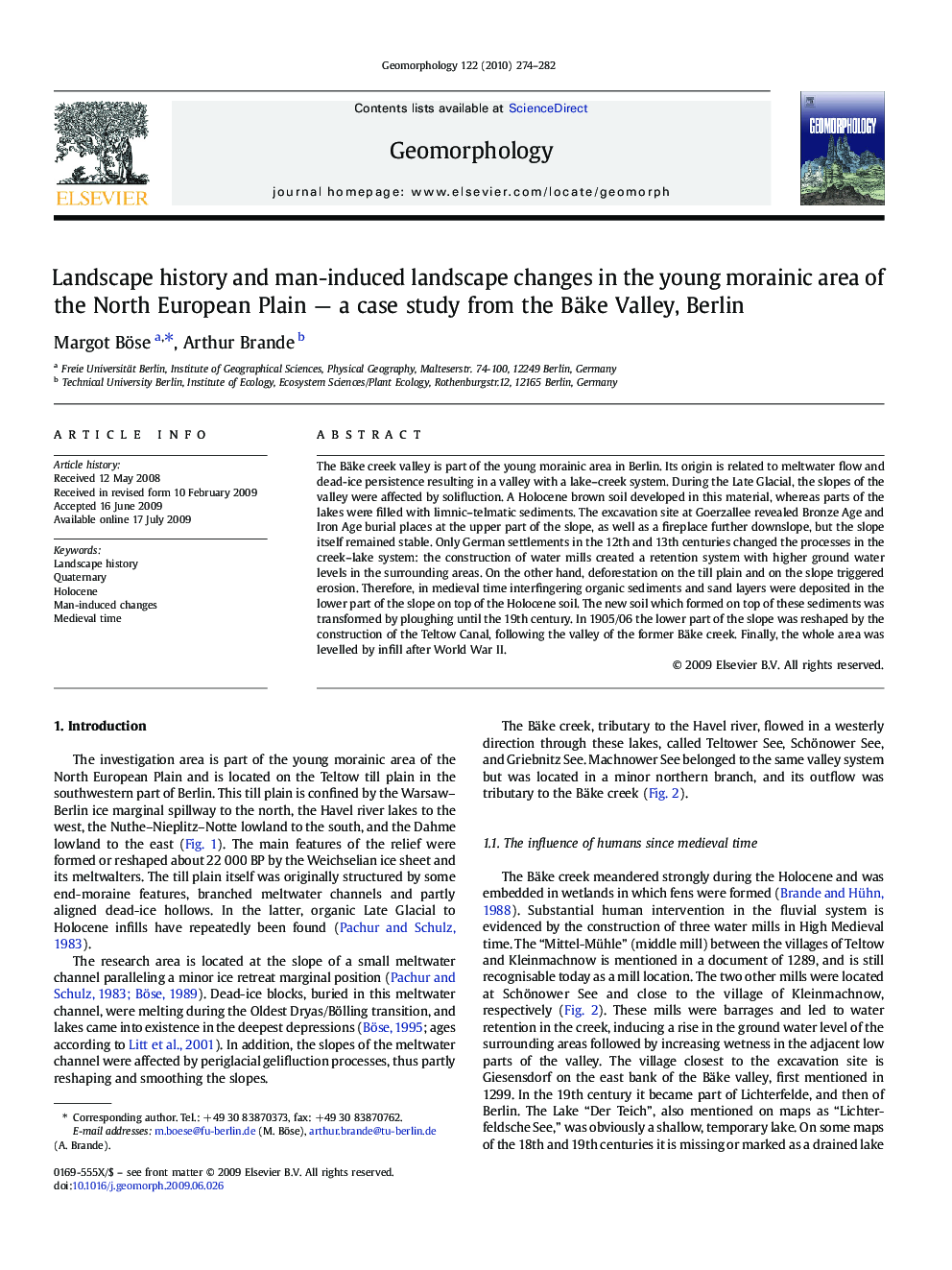| کد مقاله | کد نشریه | سال انتشار | مقاله انگلیسی | نسخه تمام متن |
|---|---|---|---|---|
| 4685887 | 1635514 | 2010 | 9 صفحه PDF | دانلود رایگان |

The Bäke creek valley is part of the young morainic area in Berlin. Its origin is related to meltwater flow and dead-ice persistence resulting in a valley with a lake–creek system. During the Late Glacial, the slopes of the valley were affected by solifluction. A Holocene brown soil developed in this material, whereas parts of the lakes were filled with limnic–telmatic sediments. The excavation site at Goerzallee revealed Bronze Age and Iron Age burial places at the upper part of the slope, as well as a fireplace further downslope, but the slope itself remained stable. Only German settlements in the 12th and 13th centuries changed the processes in the creek–lake system: the construction of water mills created a retention system with higher ground water levels in the surrounding areas. On the other hand, deforestation on the till plain and on the slope triggered erosion. Therefore, in medieval time interfingering organic sediments and sand layers were deposited in the lower part of the slope on top of the Holocene soil. The new soil which formed on top of these sediments was transformed by ploughing until the 19th century. In 1905/06 the lower part of the slope was reshaped by the construction of the Teltow Canal, following the valley of the former Bäke creek. Finally, the whole area was levelled by infill after World War II.
Journal: Geomorphology - Volume 122, Issues 3–4, 15 October 2010, Pages 274–282